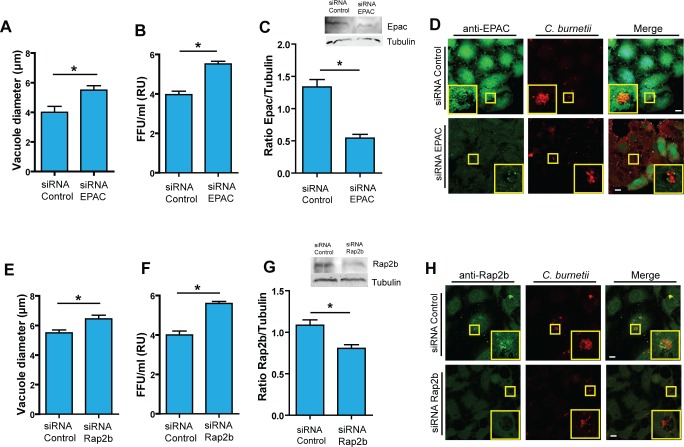Fig 3. The knockdown of EPAC or Rap2b alters development of the Coxiella vacuole.
A. Hela cells were transfected with siRNA against EPAC or an irrelevant siRNA as negative control. After 48 h, cells were transfected for a second time, infected with C. burnetii and cultured for an additional 48 h period to allow the development of the large C. burnetii vacuole (MOI = 10). Subsequently, cells were fixed and subjected to indirect immunofluorescence for the detection of both EPAC and Coxiella using specific antibodies. Images were captured by confocal microscopy. Quantification of the vacuole diameter in cells depleted for EPAC compared with the control condition. Data represent the mean ± SEM of at least three independent experiments in which at least 200 vacuoles were scored in each experiment. p≤0.01 Data represent the mean ± SEM of at least two independent experiments. B. HeLa cells were transfected with siRNA against EPAC or an irrelevant siRNA as negative control. After 48 h, cells were transfected for a second time, infected with C. burnetii and cultured for an additional 48 h period to allow the development of the large C. burnetii vacuole. The cells were then lysed by sonication and the supernatant was diluted (1:100) and used to infect Vero cells. After 72 h of incubation (chase), cells were fixed and examined by fluorescence microscopy. Data represent the mean ± SEM of at least three independent experiments where a minimum of 1,000 cells were scored in each experiment (*p ≤0.05.). C. Western blot of the assay described in A and quantification of intensity of the EPAC bands relative to tubulin. D. HeLa cells were transfected with a siRNA against EPAC or an irrelevant siRNA as negative control. After 48 h, cells were transfected for a second time, infected with C. burnetii and cultured for an additional 48 h period. Subsequently, cells were fixed and subjected to indirect immunofluorescence for the detection of both EPAC and Coxiella using specific antibodies. Images were captured by confocal microscopy. The panels show that in cells treated with siRNA there is an absence of EPAC labeling in cells indicating that EPAC was effectively depleted. E. HeLa cells were transfected with siRNA against Rap2b or an irrelevant siRNA as negative control. After 48 h, cells were transfected for a second time, infected with C. burnetii and cultured for an additional 48 h period to allow the development of the large C. burnetii vacuole (MOI = 10). Subsequently, cells were fixed and subjected to indirect immunofluorescence for the detection of both Rap2b and Coxiella using specific antibodies. Images were captured by confocal microscopy. Quantification of the vacuole diameter in cells depleted for Rap2b compared with the control condition. Data represent the mean ± SEM of at least three independent experiments in which at least 200 vacuoles were scored in each experiment. p≤0.01 Data represent the mean ± SEM of at least two independent experiments. F. HeLa cells were transfected with siRNA against Rap2b or an irrelevant siRNA as negative control. After 48 h, cells were transfected for a second time, infected with C. burnetii and cultured for an additional 48 h period to allow the development of the large C. burnetii vacuole. The cells were then lysed by sonication and the supernatant was diluted (1:100) and used to infect Vero cells. After 72 h of incubation (chase), cells were fixed and examined by fluorescence microscopy. Data represent the mean ± SEM of at least three independent experiments where a minimum of 1,000 cells were scored in each experiment (*p ≤0.05.). G. Western blot of the assay described in D and quantification of intensity of the Rap2b bands relative to tubulin. H. HeLa cells were transfected with siRNA against Rap2b or an irrelevant siRNA as negative control. After 48 h, cells were transfected for a second time, infected with C. burnetii and cultured for an additional 48 h period. Subsequently, cells were fixed and subjected to indirect immunofluorescence for the detection of both Rap2b and Coxiella using specific antibodies. Images were captured by confocal microscopy. The panels show that in cells treated with siRNA there is an absence of Rap2b labeling in cells indicating that Rap2b was effectively depleted.

